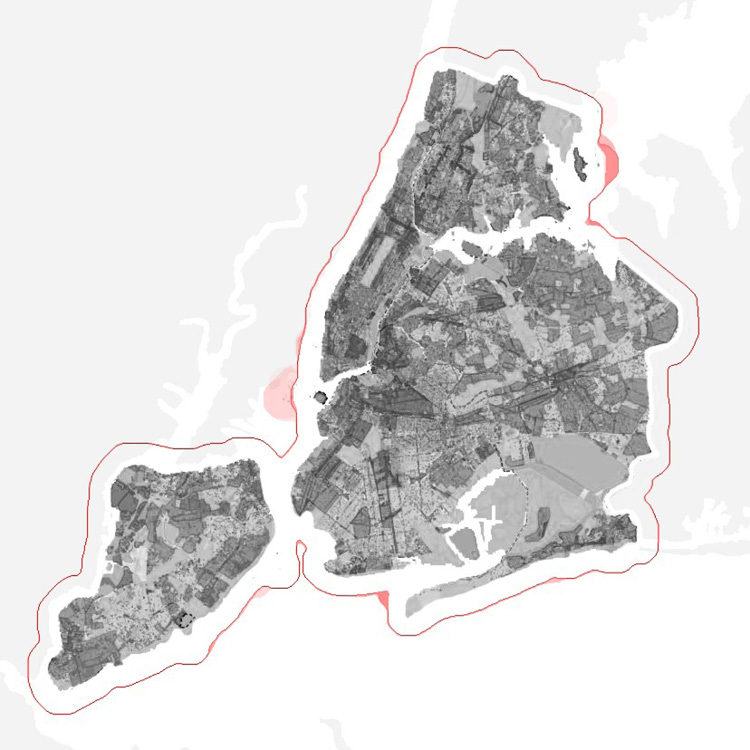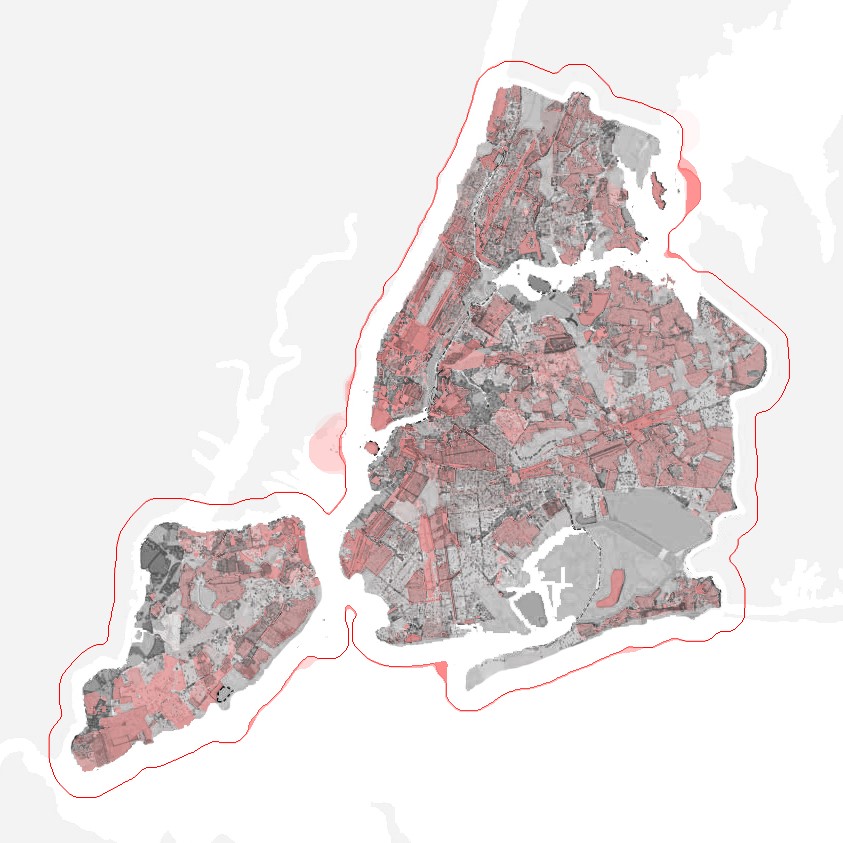
Op-Ed published in the "Skyline" column and Substacked by The New York Review of Architecture in 2021. Read on NYRA's Substack
Full disclosure: I’m not a trained planner, nor a bonafide urbanist. Just call me a New York red-flag hunter looking for built environment injustices.
After living the majority of my life among the disproportionate effects of urban neoliberalism, such as displacement, corporate white-washing, energy-sucking demolitions, cheap and toxic material usage, abusive labor practices, ecological destruction, etc., I am astounded at any logic that strips away regulation. And yet, a recent proposal put forth by City Council Speaker Corey Johnson does just that with a potentially transformative citywide zoning plan.
Before I go any further, let’s acknowledge our current system, which is more than unregulated and borders on undemocratic. A land owner or developer looks for land to construct the cheapest yet tallest building with a maximum allowed zoning footprint; shoves in as many apartments as possible; and jacks up the rent to reflect the perceived “luxury” of the new building. The red-flag neoliberal capitalist approach is to put a building lot, a single block, or an entire neighborhood through a Uniform Land Use Review Procedure, better known as a ULURP.
Our land-use system is in dire need of reform. ULURP was created in 1975 to ensure that everyone is simply aware of a rezoning. But often, it is used as an under-the-table trade between the private and public sector. The approval process is knowingly unjust and undemocratic. Even though the developer will have to cough up significant cash to upgrade the infrastructural neighborhood needs, eventually profiting off of hundreds of New Yorkers’ rent is likely to be more rewarding than winning the lottery. Red-flag: The Mayor appoints the members of the City Planning Commission who can veto or approve a ULURP before it goes to the City Council. Ultimately, through closed-door politics, the Mayor has the final say. Almost no changes have been made to New York City’s planning process in the last several decades. True, there have been minor adjustments along the way, but in the end these have not amounted to noteworthy policy changes. And none of them have been able to mitigate the private sector’s ravenous hunger for growth, nor addressed the severity of inequitable living and violent gentrification that has occurred in this city over the course of the last forty years. And here we are again!
On December 17th, 2020, Johnson, proposed a comprehensive 10-year plan called, "Planning Together." The proposed bill takes all the existing rules and organizes them from the top-down in a blanketed regional-scale perspective: “This citywide comprehensive planning framework would streamline and integrate more than a dozen planning and budget-related documents, reports, and plans already required by local law, to dramatically improve coordination across City agencies.” The red-flag being: what is “already required” will be “streamlined.” No significant changes to the current system will take place, but the proposal aims to make it easier for rezonings to move through the system. The thinking being, if we could speed up rezonings it would be less costly, stimulate growth and mitigate developer greed. It eliminates certain bureaucratic measures that currently make the developer’s job difficult. Red-flag, red-flag, red-flag.

I was screaming, albeit muted on zoom, when I heard Johnson describe this proposal in its public hearing on February 23 that, “The bill does not propose, does not require and does not trigger specific policies, zoning actions, or budget commitments...but it can reduce developer’s costs when projects are consistent with the plan.” Absolutely unacceptable! Developers should be taxed and reparations should be consistently distributed for their destructive impact. City Planning Commission Chair Marisa Lago questions this proposal’s feasibility at multiple scales, but also suggests that with developers winning out, this proposal will cause more funds to come out of taxpayer dollars — to the estimated tune of half a billion dollars.
In the urban planning discipline, most progressives support the idea of comprehensive planning. This practice looks at an entire region and, when done correctly, researches and collects data from community and neighborhood leaders and planning and infrastructure experts to determine what the city’s long-term goals look like. These days it often implies future climate crisis mitigations, equitable and affordable housing goals, reverse gentrification policies, etc. Simply put, it's a type of large-scale analysis with an organized timelined perspective. Cities across America have very much embraced it as an inclusive planning process that can inform and reflect much needed contemporary zoning laws. However, two major issues should be raised when considering a plan like this for New York City’s unique characteristics.
Within New York City’s neighborhoods, our density and architectural setbacks vary drastically —very much determined by human and environmental light and air impacts. Meaning, if you look at the zoning map of New York City, you can quickly tell that we have ad-hoc, arbitrary zoning. Random lines separate neighborhoods illogically—some streets being commercial, swaths of blocks or even individual blocks being residential of varying densities, antiquated manufacturing peppered throughout, special districts doing their own thing, etc. But the reality is that we do have existing boundaries, and our built environment and diverse residents reflect them. The Lower East Side is not Tribeca; Crown Heights is not Park Slope; and Harlem is certainly not the Upper East Side. Observing this city, I have to question whether a traditional regional-scale, comprehensive plan is the correct methodology. Over the course of the last fifty years, our lackadaisical zoning has created unequal neighborhoods. We do not have the luxury to look at our city with any sort of blanketed plan. Some neighborhoods simply need preservation against gentrifying development (i.e. Crown Heights), while others need environmental and infrastructural support (i.e. The Lower East Side), while others desperately need low-income housing distribution (i.e. the Upper East and West Sides). Although the neighborhoods of New York touch shoulders, they are vastly different and require community voices to determine each one’s important needs.
Planning Together fundamentally lacks this vital community perspective. Hunter College’s Urban Policy and Planning Professor Tom Angotti highlights this issue in his own Op-Ed for City Limits. As it currently exists, the community is ignored, and this plan “would continue to be controlled from the top, where lobbies with outsized influence rule.” A neighborhood going through a rezoning would be lucky to get one Community Board meeting where they are at least informed of upcoming development and given the opportunity to express their grievances and skepticism. Regardless, their opinion is disregarded in the eyes of developer money. This dehumanization is pathetic. New York City is in desperate need of more community-supported zoning policy and Corey Johnson’s bill does the opposite. How much longer must we wait for legitimized democratic and anti-racist zoning?
*Red-flag: The Board of Directors at AIA New York are in favor of this proposal with some “important changes” that they believe “should be instituted to improve the bill.” The much needed community perspective is not included in their amendments.